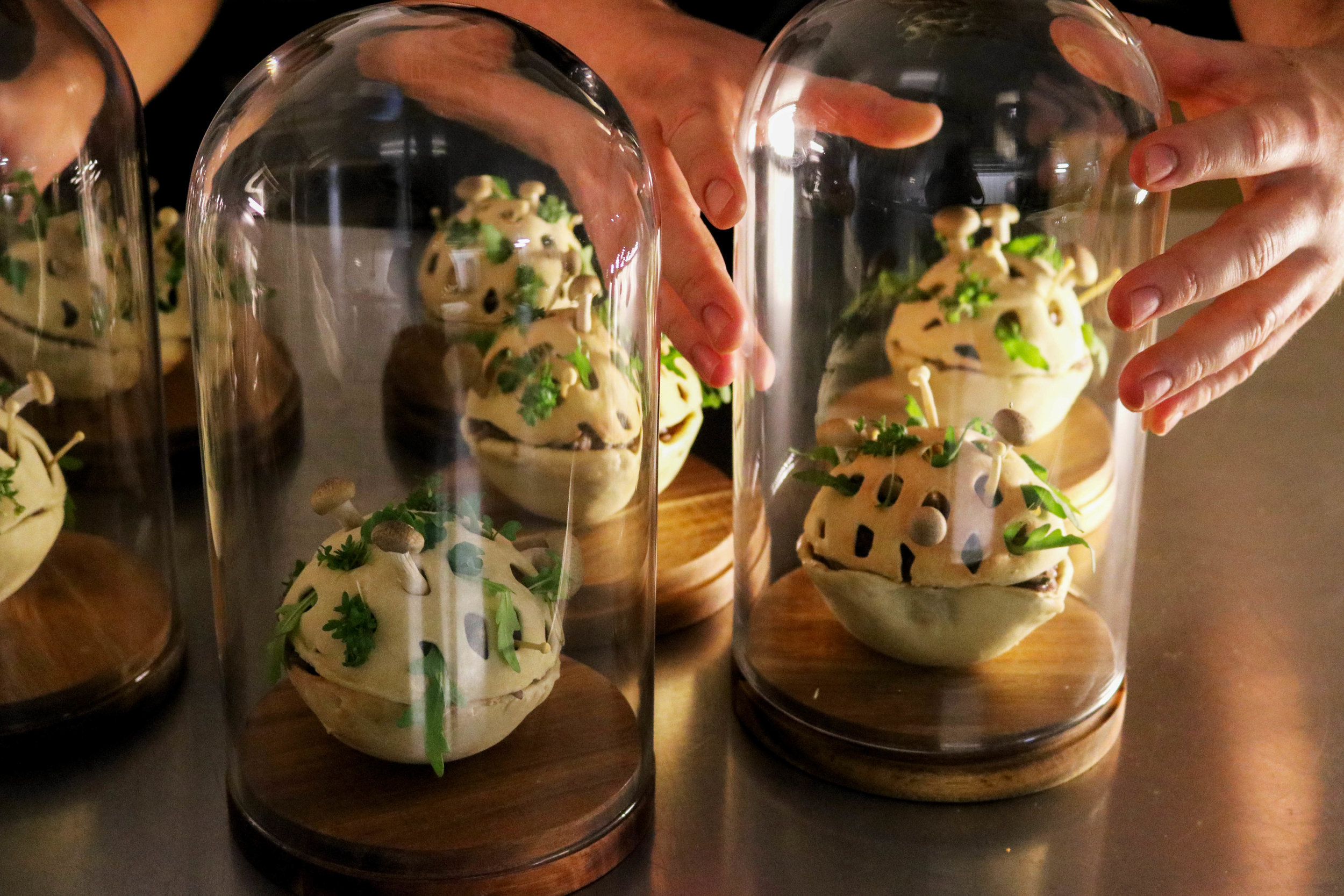Edible Growth
The use of additive manufacturing technologies
to create an edible ecosystem
Year of project: 2014
In collaboration with: TU/e & TNO
Awards: Euregio prize, Nominated for Social Design Award
Video: TEDx talk Calgary
First printed prototype from nylon
Growth process: print - grow - harvest - eat
EDIBLE GROWTH
Edible Growth is a critical design project about the potential use of additive manufacturing in food production. It’s an example of high-tech but fully natural, healthy, and sustainable food made possible by combining natural growth, technology and design.
New technologies have always influenced our eating habits, food supply chains, preparation methods and introduced entirely new food products to the market. With the rise of more high-tech food and new production methods consumers are becoming increasingly more concerned about the quality and ‘realness’ of the food and their health.
So why are we using additive manufacturing techniques to create fancy shapes of chocolate, sugar and dough? Starting from this critical view, I made it my mission to find a way to use this technology to create healthy, functional food that could contribute in solving world food problems and environmental issues.
“As a food printing skeptic, I challenged myself to find a way to use the technology of additive manufacturing to create healthy food while shortening the food production chain in the process.”
“Imagine a completely edible “mini vegetable garden” with crispy plants and mushrooms; an incomplete dish that becomes a full meal after it has been printed.”
HOW IT WORKS
Multiple layers containing a basic support structure, an edible breeding ground and various organisms are printed directly inside a tiny reusable greenhouse according to a personalized 3D file. The structure is designed in such a way that the different organisms cannot infect each other, but are all able to reach the breeding ground. After the edible is printed the consumer places the greenhouse on their windowsill where sunlight can reach it. The natural process of photosynthesis begins. Within three to five days, the plants and mushrooms are fully grown. The intensity of the taste and smell increases as the dish ripens, which is also reflected in its changing appearance. The consumer can decide when to harvest and eat the dish according to their preferred intensity.
THE BENEFITS
Sustainability
• Preventing food waste; because the dish is printed on demand and can only grow after the dry ingredients are mixed with the moisture from the breeding ground.
• No need for packaging as you can reuse the greenhouse.
• Chain shortening; Food grows at home; there is no need for food to travel from the field to the distribution center to the store before finally arriving your home. Reduction of transport emissions as a result.
Consumer involvement
• Closer to the food by seeing the product grow. Experiencing the increase of taste and smell.
• The consumer becomes the farmer and the farmer becomes the supplier of raw materials.
Healthy & fresh
• No cookies, candy or pizza, but healthy food, rich in nutrients with natural textures. Unprocessed, as the dish grows itself.





